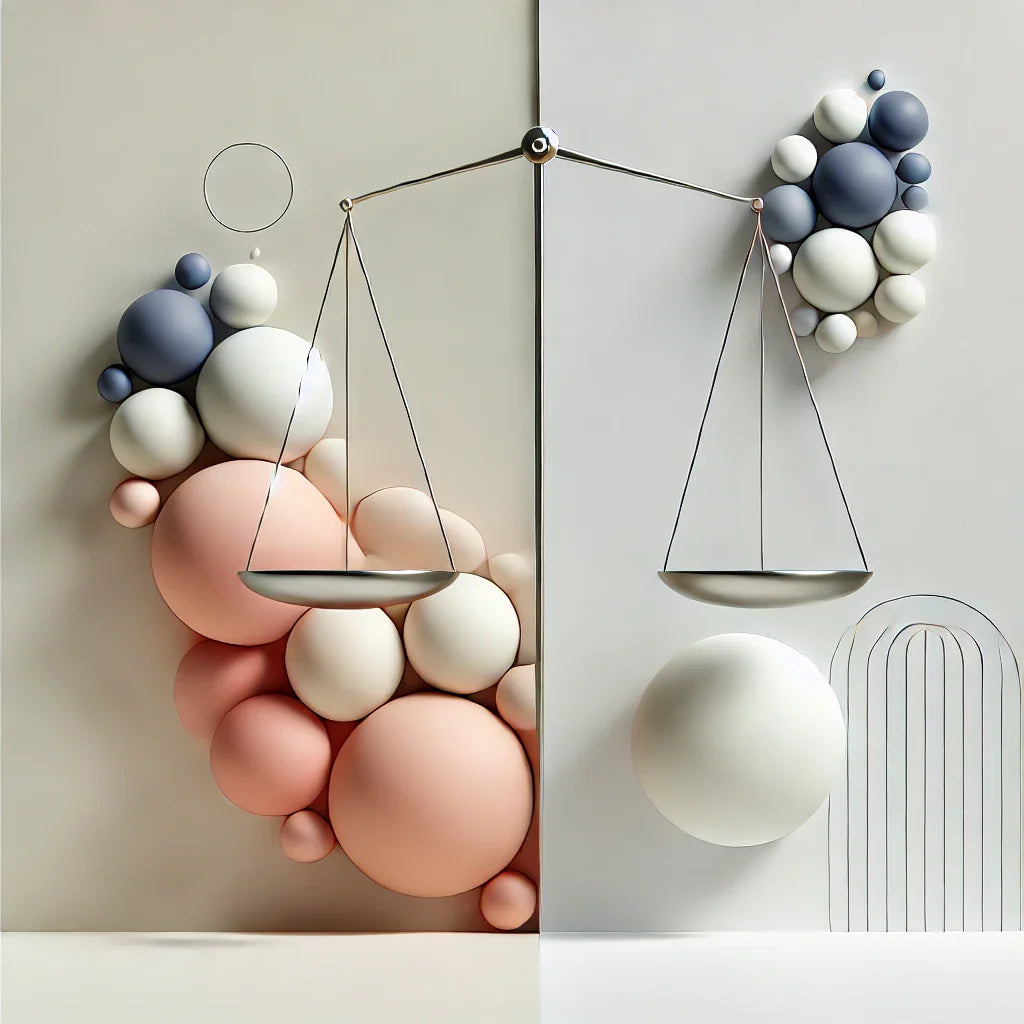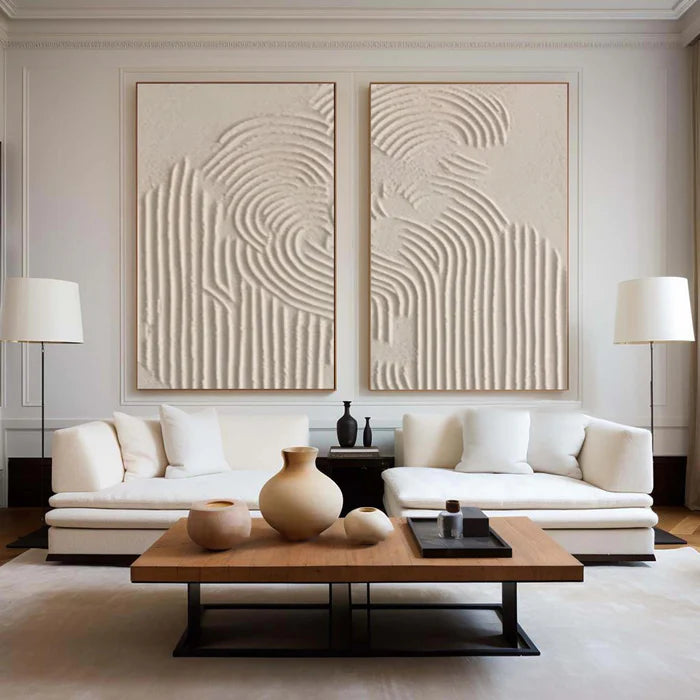Article: Balancing Instinct and Precision in Minimalist Design

Balancing Instinct and Precision in Minimalist Design
Minimalist design has long been celebrated for its prowess to do away with the unnecessary, revealing beauty in simplicity. Whether we look at minimalist art and design, architecture, or even digital interfaces, this approach demands a delicate interchange between instinct and precision. The challenge lies in balancing creativity in minimalism without losing its essence.
The Core of Minimalist Design Principles
The main idea of minimalism is that less is more. It focuses on being clear, functional, and visually appealing. Simplified design techniques emphasize eliminating clutter while maintaining purpose and elegance. Designers aim to highlight the core message or function, creating an emotional impact of minimalist art that resonates deeply with viewers or users. But how does one achieve balance in minimalist design? It often requires a combination of instinctive creativity and meticulous attention to detail. So let’s delve into how instinct and precision in design come together to create dynamic minimalist compositions.
The Role of Instinct in Minimalist Design
Instinct in design points towards the intrinsic sense of what feels right. For many minimalist artists, it is about tapping into their creative intuition to craft pieces that bring out emotion and meaning. Abstract minimalism, for example, often relies on bold yet simple forms to communicate ideas.
Instinct allows designers to:
- Recognise the potential of empty space.
- Experiment with unconventional approaches.
- Infuse their personal style into minimalist aesthetics.
However, instinct alone isn’t enough. While it fuels creativity, a lack of precision can result in designs that feel unfinished or chaotic.
Precision: The Backbone of Minimalism in Modern Design
Minimalism in modern design demands accuracy. Precision-driven minimalist styles ensure that every element—from the choice of typeface to the alignment of graphics—is purposeful and harmonious. So Designers must:
- Measure proportions meticulously.
- Use grids and alignment tools.
- Focus on consistency and scalability.
Precision reinforces the concept of intentional creativity, where every decision has a clear purpose. Whether it’s in web design or product packaging, precision ensures the final outcome is both functional and visually appealing.
Balancing Creativity in Minimalism
Balancing instinct and precision in design is both an art and a science. Too much reliance on instinct can lead to inconsistencies, while overemphasis on precision may stifle creativity. Here’s how designers can find equilibrium:
Start with Instinct, Refine with Precision
Begin with a creative brainstorming phase, allowing ideas to flow freely without constraints. Moreover Sketch concepts, experiment with colours, and explore dynamic minimalist compositions. Once the foundation is laid, refine the design using tools and techniques that ensure balance and harmony.
Minimalist design focuses on the Emotional Impact
It is pertinent to mention here that minimalist design is not just about aesthetics; it is also about the sentiments that it generates. The emotional impact of minimalist art often lies in its capability to offer calmness, curiosity, or introspection. Furthermore, use instinct to identify the emotions you want to convey and precision to execute them effectively.
Embrace Negative Space in Minimalist Design
Negative space is a hallmark of minimalist aesthetics. Therefore trust your instincts to determine where to leave areas open, and use precision to ensure that these spaces create intentional design harmony.
Iterate and Evaluate
Iterative design processes are essential for achieving balance. Present your work to peers or clients for feedback. Because often, fresh perspectives reveal areas where instinct and precision might not align.
Examples of Instinctive vs. Precise Design Methods
To understand minimalist aesthetics through balance, let’s consider two scenarios:
Instinctive Design:
A designer creates a logo using hand-drawn sketches and selects colors based on personal preference. While this method can result in unique and expressive designs, it may lack scalability and consistency.
Precise Design:
A designer uses digital tools to ensure geometric symmetry and color consistency in the same logo. While precise, this approach might lack the personal touch that instinct brings.
Both approaches have merit, but the most successful designs often integrate the strengths of each.
Creative Strategies for Minimalist Artists
For those pursuing minimalist art and design, here are some strategies to balance instinct and precision:
Simplify Without Oversimplifying:
Retain enough complexity to keep the design engaging. Also Abstract minimalism often thrives on this principle.
Leverage Technology in Minimalist Design:
Use design software to refine instinctive ideas, ensuring they align with minimalist design principles.
Study Contemporary Design Trends of Minimalist Design:
Draw inspiration from how others incorporate precision-driven minimalist styles in their work.
Experiment with Scale and Proportion:
Test different arrangements to find the most balanced composition.
The Role of Precision in Modern Minimalism
It is pertinent to mention here that modern minimalism integrates traditional design principles with contemporary innovations. Whether it’s sleek user interfaces or minimalist furniture, precision ensures functionality meets aesthetics. Designers must:
- Pay attention to typography and spacing
- Prioritise usability and accessibility.
- Adopt a "less but better" mindset.
Conclusion: The Art of Balance
Balancing instinct and precision in minimalist design is a journey of continuous learning. Thus by embracing both creative freedom and structured discipline, designers can craft works that are both meaningful and precise. From abstract minimalism to digital interfaces, this balance is what makes minimalist art and design timeless.
FAQs
-
What are minimalist design principles?
Minimalist design principles point towards not just simplicity and clarity, but also functionality by eliminating unnecessary elements while emphasising purpose and aesthetics.
-
How can I achieve balance in minimalist design?
Balance in minimalist design can be achieved by combining instinctive creativity with precise execution. Therefore, Start with a broad creative vision, then refine using tools and techniques to ensure harmony.
-
What is the role of negative space in minimalism?
Negative space enhances minimalist aesthetics by creating enough space around elements. Not only that but it also emphasises their importance and contribution to overall design harmony.
-
Why is precision important in modern minimalism?
Precision ensures that minimalist designs are functional, scalable, and visually consistent, thus enhancing their effectiveness and appeal in contemporary design trends.
-
How do instinct and precision complement each other in design?
Instinct fuels creativity and emotional expression, while precision ensures structure and consistency. Together, they create dynamic minimalist compositions that resonate deeply.
Explore more at VinchyArt


